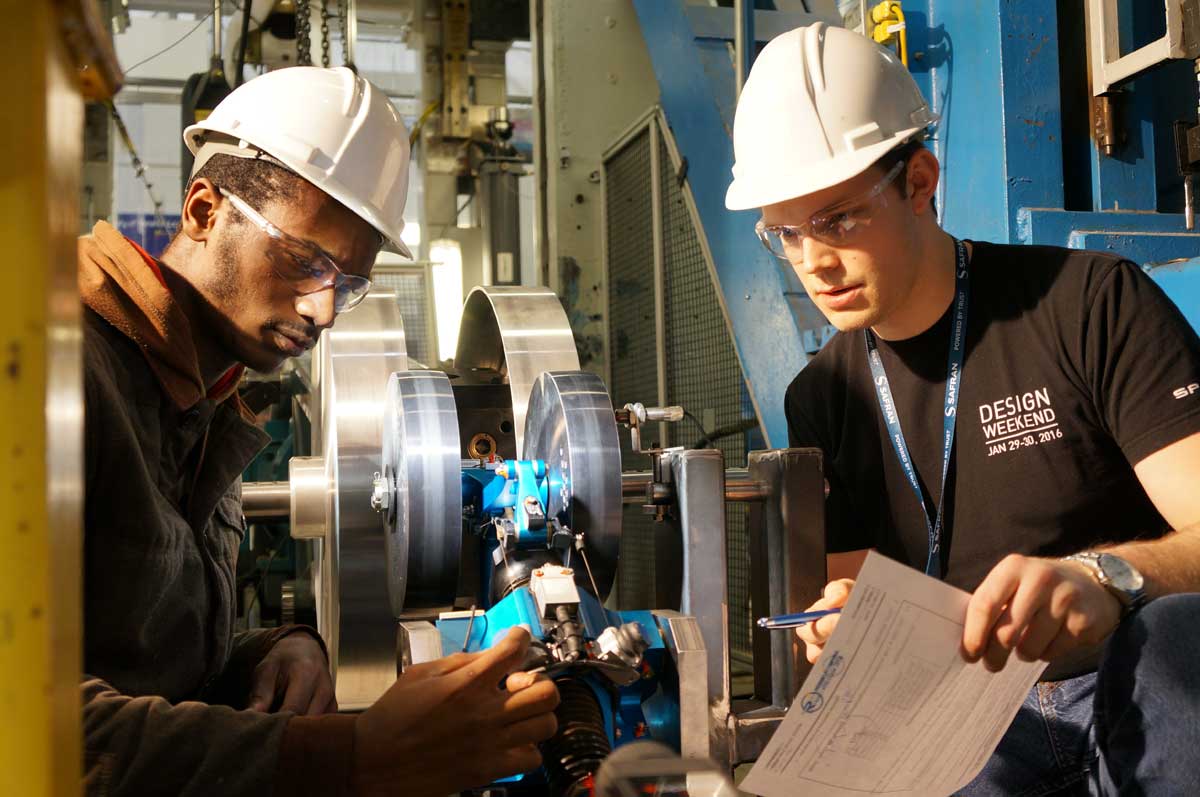Hyperloop competition raises innovation to 970 km/h

Photo: The Ryerson International Hyperloop Team designed a wheel-deployment technology for the high-speed transportation system.
Imagine a world where the Hyperloop—the high-speed tube-based transit system designed by Elon Musk—becomes a common mode of transportation. Imagine if Ryerson students could help make an innovative technology even better.
From January 27 to 29, the Ryerson International Hyperloop Team (external link, opens in new window) (RIHT) will travel to Hawthorne, California to demonstrate their Hyperloop wheel-deployment technology at the headquarters of SpaceX (external link, opens in new window) .
The California visit is the culmination of a long journey for the team, which includes four aerospace engineering (opens in new window) graduate students (Graeme Klim, Moeid Elahi, Min Prasad Adhikari, Wintta Ghebreiyesus) and two undergrads (Tayo Shoniba Re, Jesse Brito). In January 2016, the team won the Subsystem Innovation Award at the SpaceX Hyperloop Pod Competition and was invited to present their technology during the 2017 competition this weekend.
“It’s been a great learning experience for everyone,” said Graeme Klim. “Everyone is so pivotal that if somebody is sick for a week, it affects the team. Everything has to work smoothly for the whole concept to work at this point, but in general it’s worked out pretty well for us, so we’re very happy with the way the collaboration worked.”
The proposed Hyperloop would consist of two massive tubes connecting San Francisco and Los Angeles, which would transport pods at speeds of up to 700 mph. The SpaceX Hyperloop Pod Competition invites student groups to design and build Hyperloop pods or subsystems. RIHT has designed a subsystem: a wheel-deployment system, which would act as a safety precaution if the pod’s magnetic levitation or air bearings fail. For the demonstration, the team has installed four Hyperloop Deployable Wheel Systems on a Hyperloop pod.
The competition has allowed the students to network with industry professionals, raising $200,000 in financial support from 20 sponsors—notably Altair Engineering and Burloak Technologies, which provided the technology to 3D print metal. “We have such great partnerships,” said Klim. “To have the opportunity to work with the executive team at companies like Safran Landing Systems has been a phenomenal experience.”
The project has given the students an opportunity to apply their aerospace engineering knowledge in a real-world context. “From a design perspective, it’s very easy to get caught up in a cool-looking 3D model, and say, ‘Oh, this looks really good—optimize this, optimize that,’” said Klim. “But then you’re going to go give that part to your machinist and he’ll say, ‘Are you crazy? I can’t do that.’ That learning curve, and that relationship I developed with the machinists for our project, helped me learn a lot about design techniques, ease of manufacturability, and cost and weight reduction.”
For more information on the Ryerson International Hyperloop Team, visit their website (external link, opens in new window) .